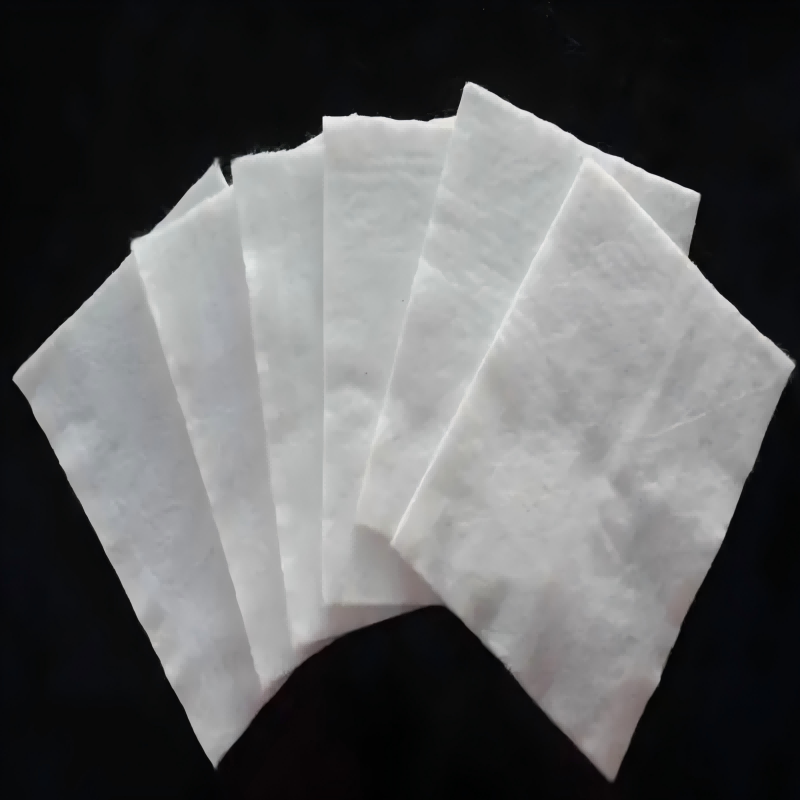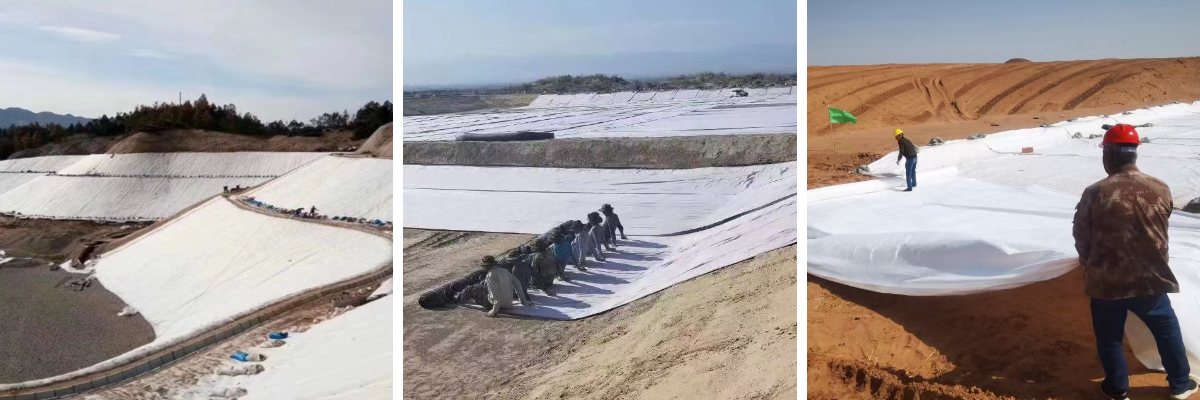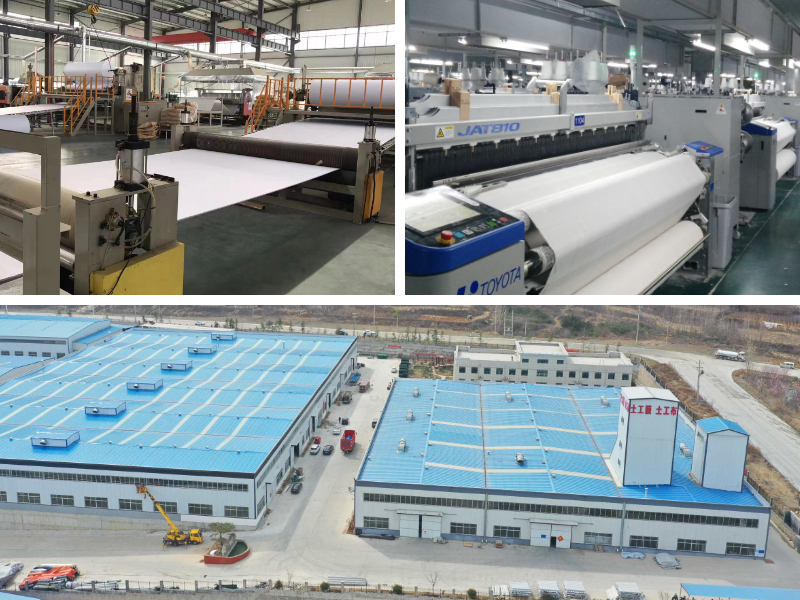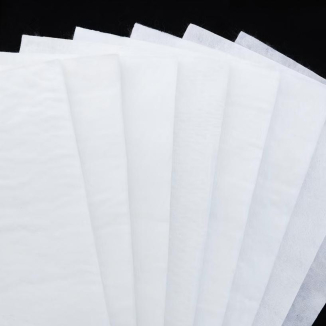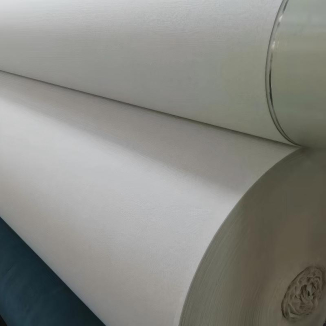Filtration Geotextile
1.Good reinforcement effect:Strengthen the bearing capacity of the foundation, reduce the settlement and cracking of highways, dams and other projects, and extend the service life of the structure by more than 30%.
2.Strong isolation effect:Accurately separate different materials such as sand, gravel, and soil to avoid structural looseness caused by mixing and maintain the stability of each layer.
3.Drainage filter rod:Quickly discharge rainwater and groundwater, while blocking fine soil particles to prevent infiltration and damage, significantly improving drainage efficiency.
4.Excellent environmental resistance:Resistant to UV aging, acid and alkali corrosion, with a service life of over 10 years in high temperature, rainy or saline alkali environments.
5.Construction saves money quickly:The texture is lightweight and easy to cut, with a 50% increase in manual laying efficiency and a material cost savings of about 20% compared to traditional solutions.
Product Introduction
1.Basic attributes
Filtration Geotextile are made from polymer synthetic fibers such as polyester (PET) and polypropylene (PP), and are divided into two categories: long fibers and short fibers. They are made through weaving (warp and weft interweaving to enhance strength), needle punching (random fiber winding to increase fluffiness), or hot rolling (thermal bonding to reinforce structures) processes. The thickness of the product is usually 1.0-4.0mm, with a width of 2-6m, and it has significant permeability (vertical permeability coefficient of 1 × 10 ⁻³ -1 × 10 ⁻¹ cm/s). It can be customized with rolls or sheets of different weights (100-800g/㎡) according to engineering needs, suitable for various scenarios from light horticulture to heavy water conservancy.
2.Core functions
Structural reinforcement: By dispersing the load through the tensile action of fiber mesh, the vehicle pressure can be evenly transmitted to the base layer in the highway subgrade, reducing settlement by 30% -50%; In dam engineering, a composite stress system can be formed with the soil, which can increase the shear strength by 20% -40% and effectively prevent landslides.
Material isolation: A physical barrier is formed at the interface between the roadbed and the sand layer, concrete and backfill soil, etc., to prevent fine soil particles from entering the gaps between coarse aggregates and avoid structural looseness caused by material mixing - for example, in railway track laying, the service life of the roadbed can be extended to more than 15 years (traditional non isolation layers are only 5-8 years).
Filtering and drainage: With the characteristics of "permeable but impermeable soil", it can intercept soil particles with a particle size of 0.075mm or more in hydraulic engineering, while maintaining a seepage rate of 5-20m/d. It not only prevents seepage from causing pipe surges in dams and slopes, but also quickly discharges accumulated water in the foundation, reducing pore water pressure.
3.Main features
Strong weather resistance: after adding anti-aging agents such as carbon black, it can withstand the extreme temperature of -40 ℃ to 80 ℃, maintain the intensity of more than 90% under ultraviolet radiation for 5 years, and still have a service life of more than 10 years in corrosive environments such as saline alkali land and chemical pollution areas.
Efficient construction: The weight of a single roll is only 20-50kg, and the daily laying area of a team of two can reach 800-1200 square meters, which is three times more efficient than traditional sand and gravel isolation layer construction. It does not require complex mechanical assistance and is suitable for special terrains such as mountains and wetlands.
Excellent economy: The unit price of materials is about 2-8 yuan/square meter, which is 40% lower than the cost of traditional cement isolation layers; At the same time, by reducing later maintenance (such as road renovation and dam rescue), the total lifecycle cost can be saved by more than 60%.
Product Parameters
project | metric | ||||||||||
Nominal strength/(kN/m) | |||||||||||
6 | 9 | 12 | 18 | 24 | 30 | 36 | 48 | 54 | |||
1 | Longitudinal and transverse tensile strength / (kN/m) ≥ | 6 | 9 | 12 | 18 | 24 | 30 | 36 | 48 | 54 | |
2 | Maximum elongation at maximum load in longitudinal and transverse directions/% | 30~80 | |||||||||
3 | CBR top penetration strength /kN ≥ | 0.9 | 1.6 | 1.9 | 2.9 | 3.9 | 5.3 | 6.4 | 7.9 | 8.5 | |
4 | Longitudinal and transverse tearing strength /kN | 0.15 | 0.22 | 0.29 | 0.43 | 0.57 | 0.71 | 0.83 | 1.1 | 1.25 | |
5 | Equivalent aperture O.90(O95)/mm | 0.05~0.30 | |||||||||
6 | Vertical permeability coefficient/(cm/s) | K× (10-¹~10-), where K=1.0~9.9 | |||||||||
7 | Width deviation rate /% ≥ | -0.5 | |||||||||
8 | Unit area mass deviation rate /% ≥ | -5 | |||||||||
9 | Thickness deviation rate /% ≥ | -10 | |||||||||
10 | Thickness coefficient of variation (CV)/% ≤ | 10 | |||||||||
11 | Dynamic perforation | Puncture hole diameter/mm ≤ | 37 | 33 | 27 | 20 | 17 | 14 | 11 | 9 | 7 |
12 | Longitudinal and transverse fracture strength (grab method)/kN ≥ | 0.3 | 0.5 | 0.7 | 1.1 | 1.4 | 1.9 | 2.4 | 3 | 3.5 | |
13 | Ultraviolet resistance (Xenon arc lamp method) | Longitudinal and transverse strength retention rate% ≥ | 70 | ||||||||
14 | Ultraviolet resistance (fluorescence UV lamp method) | Longitudinal and transverse strength retention rate% ≥ | 80 | ||||||||
Product Application
Geotextiles are widely used in various engineering fields due to their core functions such as reinforcement, isolation, and filtration. The specific scenarios are as follows:
1.Road and Traffic Engineering
Roadbed reinforcement: Laying in highway and railway roadbeds to disperse vehicle loads and reduce foundation settlement, especially suitable for soft soil foundation sections, can extend the service life of roadbeds by 5-8 years.
Road crack prevention: sandwiched between the asphalt layer and the base layer, it alleviates the shrinkage cracks caused by temperature changes in the road surface. After application in a certain highway project, the crack occurrence rate decreased by 60%.
Airport runway: used for the isolation of runway base and cushion layer, preventing sand and gravel mixing, ensuring the stability of runway structure, and adapting to high-frequency loads of aircraft takeoff and landing.
2.Water conservancy and waterway engineering
Dam protection: Laying on the upstream face of the dam, combined with anti-seepage membrane, can filter seepage, prevent piping, and protect the soil material of the dam body from being washed away by water flow. After application in a certain reservoir project, the leakage of the dam body was reduced by 80%.
River management: used for slope protection of river channels, combined with ecological bags to form flexible revetments, providing a growth environment for aquatic plants while resisting erosion, and balancing flood control and ecological restoration.
Port terminal: It plays an isolation and filtering role in the foundation treatment of the yard to prevent sediment from entering the cushion layer of the yard and ensure the bearing capacity of the foundation for large machinery operations.
3.Environmental Protection and Municipal Engineering
Landfill site: As an auxiliary layer of the anti-seepage system, it is laid under the HDPE membrane to filter impurities in the leachate, prevent the membrane from being punctured by sharp objects, and enhance the stability of the anti-seepage system.
Wastewater treatment: Using artificial wetlands as a filtering layer to intercept suspended particles in wastewater, creating a favorable environment for microbial degradation of pollutants and improving wastewater treatment efficiency.
Underground pipe gallery: Wraps the foundation of the pipe gallery, isolates soil and backfill materials, reduces structural stress caused by soil settlement in the pipe gallery, and lowers the risk of pipeline rupture.
4.Mining and Energy Engineering
Mine reclamation: Lay backfill soil on the surface of the mining area to prevent topsoil loss and promote rainwater infiltration, providing a stable base for vegetation restoration and assisting in ecological restoration of the mine.
Tailings treatment: Used for anti-seepage and filtration of tailings dams, preventing tailings particles from migrating with seepage and reducing environmental pollution risks. After application in a gold mine project, the wastewater treatment compliance rate has increased to 95%.
5.Agriculture and Horticulture
Irrigation system for farmland: Installed on the slopes of irrigation channels to reduce erosion caused by water flow, while maintaining soil permeability and improving water resource utilization efficiency.
Horticultural planting: As an isolation layer for flower pots or planting beds, it prevents soil compaction and promotes the discharge of excess water, especially suitable for potted scenes such as succulent plants and seedlings.
In summary, geotextile has become a key material in cross disciplinary engineering construction due to its multiple characteristics such as reinforcement, isolation, filtration, and drainage. Whether it is ensuring the durability of transportation facilities, improving the safety of water conservancy projects, or assisting in environmental protection and agricultural production, the function of adapting scenarios can effectively reduce project maintenance costs, extend service life, and take into account ecological benefits, demonstrating irreplaceability in complex engineering environments.



